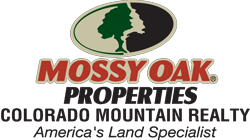Colorado has a long connection with paleontology that you might not know. Colorado was one of the first states in the country to adopt an official “state dinosaur” ever: the stegosaurus. There’s a good reason for this, which is connected to a long-standing history of the settlement of Colorado, especially through its geology.
In 1859, gold was discovered in Colorado, bringing a deluge of prospectors into the state, and with all the digging people were doing, brought about a silver rush as well. By the time Colorado was officially a state in 1876, due mostly to the influx of people digging for precious metals, there was another rush going around the world. This was something known later as the Bone Wars. For the next few decades, a burgeoning branch of geology known as paleontology was beginning, and because of all the geologists who had been in the state for so many years looking for precious metals, there was suddenly a wellspring of information about fossils and where they could be found in the Rocky Mountain region.
For a time, Colorado proved to be one of the biggest suppliers of intact dinosaur skeletons in the world.
Dinosaur, CO
In history, one particular area was home to Native American tribes such as the Ute and Shoshone, as well as various Paleoindian cultures, but 65-145 million years ago, it was a place that was rife with prehistoric animals. In 1915, President Woodrow Wilson proclaimed a site discovered by early paleontologist Earl Douglass as a national monument. Douglass presented his findings in 1909, and since then thousands of dinosaur bones have been found in the area. As it happens, this site provided the skeleton of our state fossil, the stegosaurus. Dinosaur National Monument set aside 210,000 acres of land near the Utah border to remain as a place where fossils continue to be discovered and excavated.
This site didn’t always have a happy ending in sight, however. In the 1950s, right around the same time when the Colorado River was being dammed over by a small growing city known as Las Vegas, NV, another dam was planned, which would have flooded Dinosaur National Monument. It was a close call, but the project was abandoned in 1956 and the Monument continued to serve to educate the scientific community and dinosaur enthusiasts for generations to come.
Even if dinosaur bones aren’t your thing, the area is home to a variety of petroglyph and pictographs as well as other important parts of Native American culture from several tribes. Though the stegosaurus and camarasaurus aren’t available for your trophy collection anymore, the Dinosaur National Monument area is home to the largest migrating elk herd in the world as well as Boone and Crockett Club record-holding entries for both elk and mule deer.
Contact Us!
If you would like to learn more about this and other interesting places where you can buy land in Colorado, check out our listings. Our team of realtors is here to match you with the property of your dreams. Owning land in a place where “Dinosaurs once roamed” might just be exactly what you are looking for!

